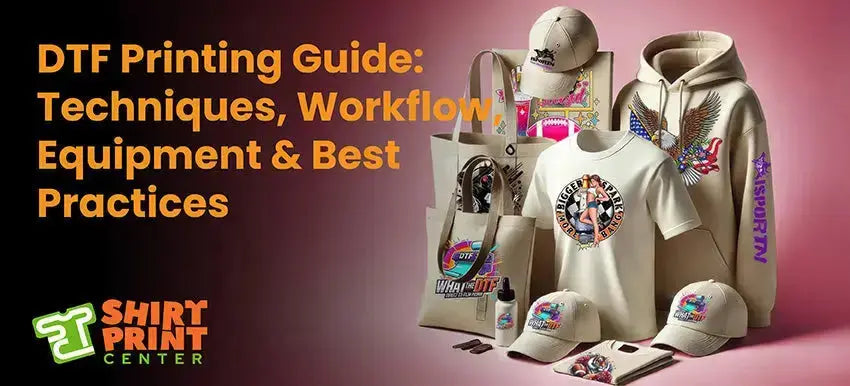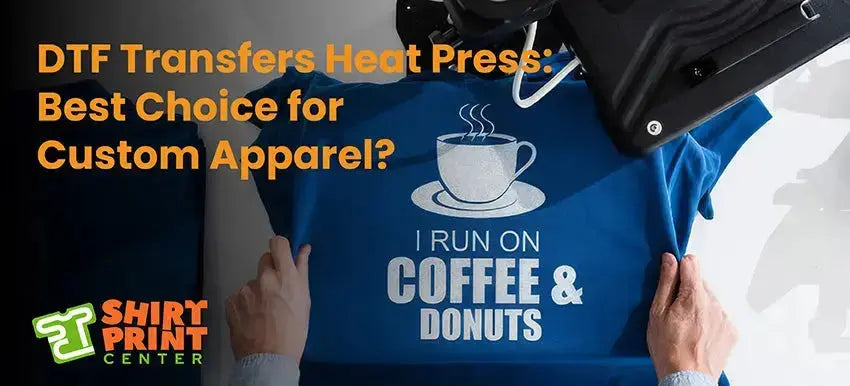Direct-to-Film (DTF) printing is an innovative method of transferring high-resolution graphics onto various substrates using a specialized printer that deposits ink onto a clear PET film, followed by the application of a hot-melt adhesive powder and curing. Unlike Direct-to-Garment (DTG) printing, which inks fabric directly, DTF transfers allow you to pre-print, store, and later apply designs, offering unmatched flexibility and color vibrancy.
Custom DTF Transfers: A Comprehensive Guide
When it comes to personalized t-shirt designs, custom DTF transfers have taken the industry by storm. They offer vibrant colors, durability, and the flexibility to print on a variety of fabrics. Whether you're printing for a business or crafting at home, this guide will walk you through everything you need to know about DTF heat transfers.
From understanding what they are to learning how to make them yourself, this comprehensive guide is your one-stop shop for mastering custom DTF transfers. Let’s dive in!
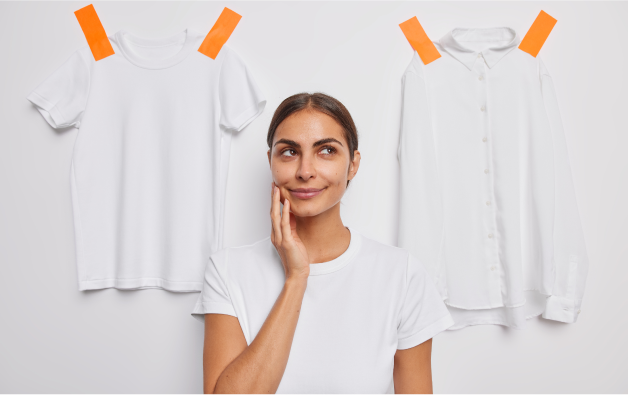

What Are Custom DTF Transfers?
Custom DTF transfers are heat-applied designs that can be printed onto garments or other surfaces. This process involves printing on a PET film, adding adhesive powder, curing the design, and transferring it to fabric using a heat press.
What sets custom DTF transfers apart is their ability to produce high-quality, long-lasting prints. Whether you're crafting your own designs or working with a professional, these transfers allow for endless customization.
Definition and Basics of Custom DTF Transfers
Custom DTF transfers are perfect for creating unique, vibrant, and durable designs for various surfaces. Unlike traditional methods like vinyl or sublimation, they are easy to use, don’t require pre-treated fabric, and can handle fine details effortlessly.
Distinctions Between Custom and Regular DTF Transfers
The main difference between custom DTF transfers and regular DTF transfers is personalization. Regular transfers are often pre-made and sold in bulk, limiting your design options. Custom transfers, on the other hand, are tailored to your needs, allowing you to use specific logos, intricate designs, and unique patterns.
Applications of Custom DTF Transfers
Custom DTF transfers are highly versatile and can be used for:
- T-Shirts: Ideal for personal or business use.
- Accessories: Add your designs to bags, caps, or even shoes.
- Corporate Branding: Perfect for promotional items or uniforms.
- Special Occasions: Create personalized gifts or event-themed apparel.
From fashion items to branding tools, custom DTF transfers are an easy way to add creativity and professionalism to any project.
How to Make Custom DTF Transfers
Making custom DTF transfers is a straightforward process once you have the right tools. Whether you’re a professional or a DIY enthusiast, understanding the equipment and steps involved will ensure better results.
Essential Equipment for DTF Printing
To create custom DTF transfers, you’ll need:
- DTF Printer: Specifically designed to handle DTF printing tasks.
- PET Film: A special type of film for printing designs.
- DTF Ink: High-quality inks that ensure vibrant and long-lasting colors.
- Adhesive Powder: Used to make the design stick to the fabric during heat pressing.
- Heat Press Machine: Essential for transferring the design onto the fabric.
Without the right equipment, it’s difficult to achieve the professional quality that DTF heat transfers are known for.
Special Ink, Film, and Design Software
The ink, film, and design software play critical roles in achieving perfect results. Using subpar materials can result in smudging, faded colors, or poor adhesion. Always opt for high-quality supplies and trusted brands.
DIY Custom DTF Transfers
If you’re a hands-on creator, making custom DTF transfers at home can be rewarding and cost-effective. However, it does require a bit of practice and investment in the right tools.
Using a Cricut Machine for DTF
While Cricut machines are commonly used for vinyl, they can also be adapted to help with DTF designs. By pairing Cricut cutting capabilities with DTF adhesive films, you can craft your designs with precision.
Converting a Regular Printer for DTF Use
If you don’t own a DTF printer, it’s possible to convert an inkjet printer for DTF printing. This involves using DTF inks and ensuring the printer settings are adjusted for PET film. Keep in mind, this method is experimental and requires careful attention.
Step-by-Step Guide to Creating Custom DTF Transfers
Here’s a quick breakdown of the process:
- Create your design using graphic software like CorelDRAW or Photoshop.
- Print the design on PET film using your DTF printer.
- Coat the wet ink with adhesive powder evenly.
- Cure the design with a heat press or curing oven at the recommended temperature.
- Your transfer is now ready to apply to your garment or surface.


Cost of Custom DTF Transfers
The cost of custom DTF transfers depends on factors like design complexity, equipment, and order volume. However, they remain a cost-effective option for high-quality, professional designs.
Pricing of Custom DTF Transfers
- Per-Item Costs: Small designs typically cost $2-$5 to produce.
- Equipment Costs: Investing in a good printer and press can range from $1,000-$3,000.
While the initial setup may seem expensive, the ability to print custom designs for a variety of projects makes DTF printing a worthwhile investment.
Per-Item Cost and Maintenance of DTF Equipment
Proper maintenance of your DTF printer and heat press ensures consistent results and prolongs equipment life, reducing costs in the long run.
Profitability of DTF Printing
Custom DTF heat transfers are highly profitable for businesses. You can charge anywhere from $15 to $30 per shirt, depending on design complexity, while keeping production costs low.
Revenue Opportunities and Cost Comparisons
Compared to other printing methods like sublimation or vinyl, DTF printing offers better profit margins thanks to its compatibility with different fabrics and reduced labor requirements.
Comparing Custom DTF Transfers with Other Printing Methods
Custom DTF transfers have distinct advantages over traditional printing methods.
DTF vs Sublimation
Sublimation works best on light-colored, polyester fabrics. DTF heat transfers, however, can handle dark-colored fabrics and are compatible with a wider range of materials, making them more versatile.
Suitability for Different Shirt Colors and Fabrics
Unlike sublimation, which struggles with dark fabrics, custom DTF transfers perform beautifully on any color.
DTF vs HTV and Vinyl
- Durability: DTF prints last longer without cracking or peeling.
- Ease of Use: DTF doesn’t require the time-consuming weeding process that HTV does.
Comparing Durability, Flexibility, and Quality
Custom DTF transfers offer a softer finish compared to vinyl, making them more comfortable to wear.
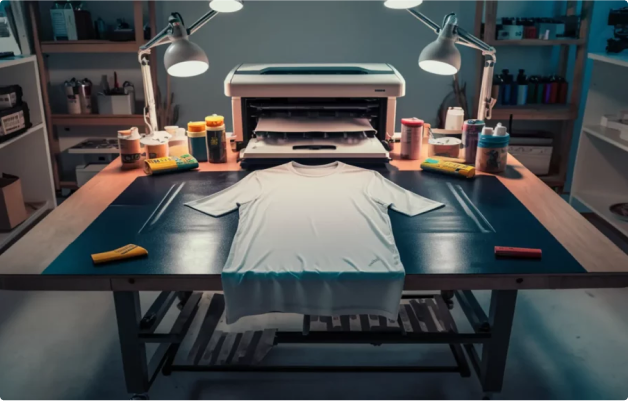
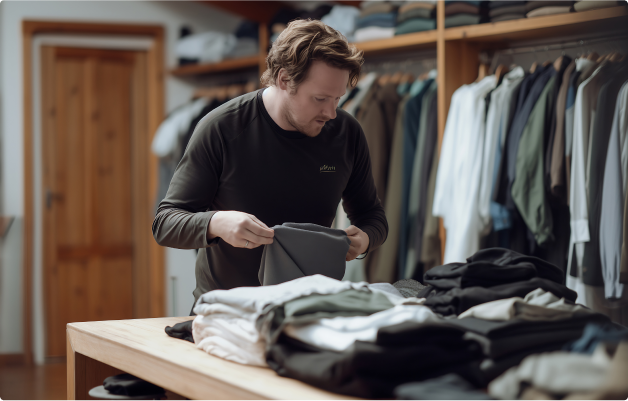
Conclusion and Final Thoughts
Advantages of Choosing Custom DTF Transfers
With their ease of use, versatility, and cost-effectiveness, custom DTF transfers are an excellent choice for businesses and hobbyists alike. Their ability to produce vibrant, durable designs on various fabrics makes them stand out in the printing world.
Practical Tips for DTF Printing Beginners
- Invest in quality materials and equipment.
- Practice on test garments before large-scale production.
- Partner with a trusted provider like Shirt Printing Center in Katy, Texas, for your custom transfer needs.
DTF printing opens up endless creative possibilities. Whether you’re crafting for fun or profit, custom DTF transfers are your ticket to success.
